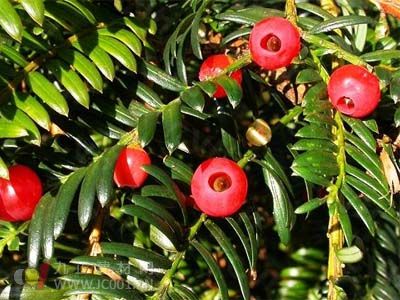Taxus Seedling Propagation Methods:
Pre-planting Techniques
The conservation of yew resources and the rapid propagation of seedlings are essential for establishing paclitaxel timber forests. Large-scale yew plantations are key to securing raw materials for pharmaceutical use.
When cultivating seedlings from yew seeds, it is important to store them in sand or mix with controlled temperature conditions. This helps improve germination and break dormancy after winter. Before planting, you should scarify the seed coat, soak the seeds in warm water, and apply growth hormones. Shading after emergence is crucial for protecting young plants from high temperatures and maintaining 40% moisture levels. The germination rate for Taxus chinensis and Taxus chinensis var. mairei can reach 70–80%, with a minimum temperature requirement of 15°C.
Seedling growth follows a gradual pattern. In the first two years, plant height increases by about 10 cm annually, and growth accelerates after transplanting. Within 3–5 years, height can increase by 20–30 cm.

2. Tissue Culture and Breeding of Yew
Tissue culture leverages the pluripotency of plant cells, using various parts of the yew—such as stems, needles, bark, and embryos—as explants. This method allows for the mass production of genetically identical seedlings.
(1) Selecting high-quality varieties like Taxus cuspidata, which has high paclitaxel content, is the first step. These explants are cultured on appropriate media, leading to callus formation, rooting, and eventually seedling development. After acclimatization, these lab-grown seedlings become ready for field planting.
(2) The callus formation varies depending on species, explant type, sampling time, light conditions, and medium composition. For example, Taxus, southern yew, and Yunnan yew can form callus, but the success rate differs.
Studies show that hydrolyzed complex proteins (CA) can enhance wound healing in Taxus species, but concentrations above 0.5% may hinder paclitaxel accumulation. At higher concentrations (over 1%), CA promotes tissue regeneration without affecting paclitaxel levels.
Similarly, 2,4-D supports callus formation and improves induction rates. Callus formed in this medium tends to be larger and softer. Other factors, such as B5 medium, sucrose, and galactose, also influence paclitaxel content. However, high glucose levels inhibit its synthesis.
Research by GIBSON found that both cell suspension and callus cultures perform better in the dark than under light.
Regardless of the tissue culture method, selecting cells with strong proliferative capacity is essential. These cells, rich in starch granules and capable of differentiation, help form cell clusters, promoting metabolic activity and functional specialization. This is vital for the production of secondary metabolites like paclitaxel.
3. Artificial Cutting Propagation of Yew
Cuttings are an effective way to propagate yew. Spring shoots are ideal for cuttings, while autumn branches are harder. Shading is necessary during the process, with a survival rate often exceeding 70%. Traditional methods usually have lower success rates, around 3–20%. A shading rate of at least 60% is recommended.
Maintaining humidity between 75–85% is crucial, especially when the roots begin to develop. Avoid exposure to strong winds, which can cause dehydration.
Several factors affect cutting survival, including age, temperature, hormone concentration, substrate, season, and variety. Data shows that survival rates vary: 95% for Taxus chinensis, 90% for Taxus yunnanensis, and 86% for Chinese yew.
In the first year, the top growth of cuttings is slow, but root development is rapid. After transplanting, continued shading and proper care are needed to ensure optimal conditions. Growth is fastest in summer and slows in winter and spring. Temperature fluctuations must be monitored, as prolonged dryness can lead to stunted growth or death. Once established, yew seedlings have high survival rates in afforestation projects, showing rapid growth and minimal losses.
Cuttings remain one of the most efficient ways to address yew resource shortages and support the development of medicinal forests.
Door Viewers
The door observer is a small optical instrument installed on the door of a residence, which is convenient for residents to observe the outdoor situation. Has become a necessity for home safety.
It is composed of a concave lens (objective lens) and a convex lens. The focal length of the objective lens is extremely short, it makes the outdoor person or object into an upright and reduced virtual image, which falls just within the focus of the eyepiece, and finally a reduced upright virtual image is obtained, which is exactly at the clear viewing distance of the human eye. Nearby, you can see the situation outside the door clearly.
To ensure the quality of this Reliable Solid Brass Door Viewers we have strict quality control from material processing, polishing, assembly and packaging. Extensive experiences, mature technology and professional service allows us to meet the different needs of customers of different regions.We produce Door Hardwares of various functions and styles, fits perfectly to all kinds of frameless shower enclosures. Special requirements and sizes are available. Please just feel free to contact us if you have any question. Our team is on call for 24/7 to provide the worry-free before/after-sale service.The Door Hardware produced by our company includes door viewers, Door Hinges , Door Stoppers, Door Holders, Door Guards , door selectors, Door Hang Wheels and other series of hardware products, which can meet the installation needs of all building materials.
Digital Door Viewer,Door Eye Viewer,Door Peehole Viewer, brass door viewer,peehole for home
Leader Hardware Manufacturer Limited , https://www.leaderhardwarecn.com